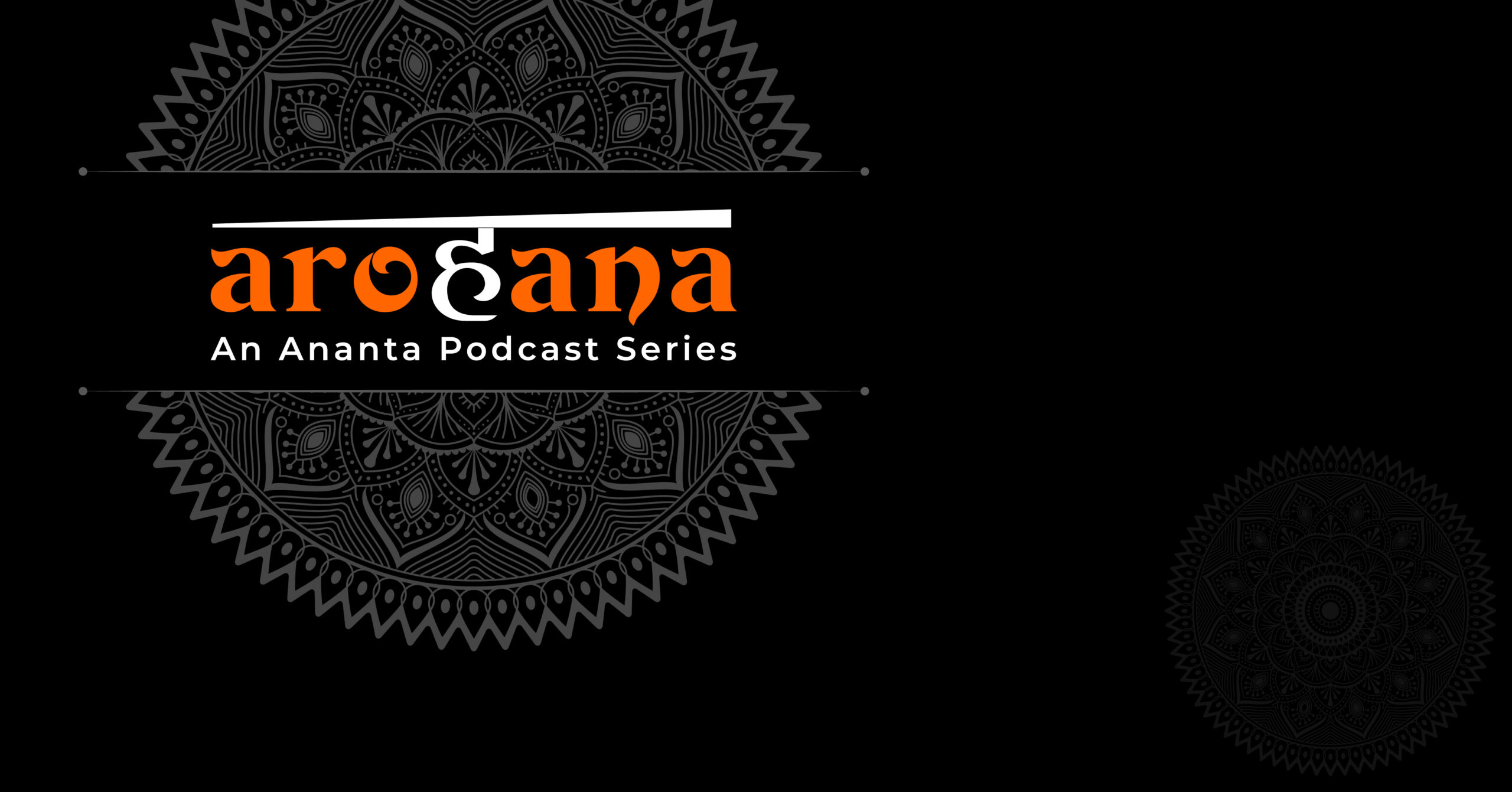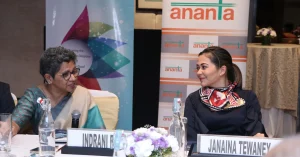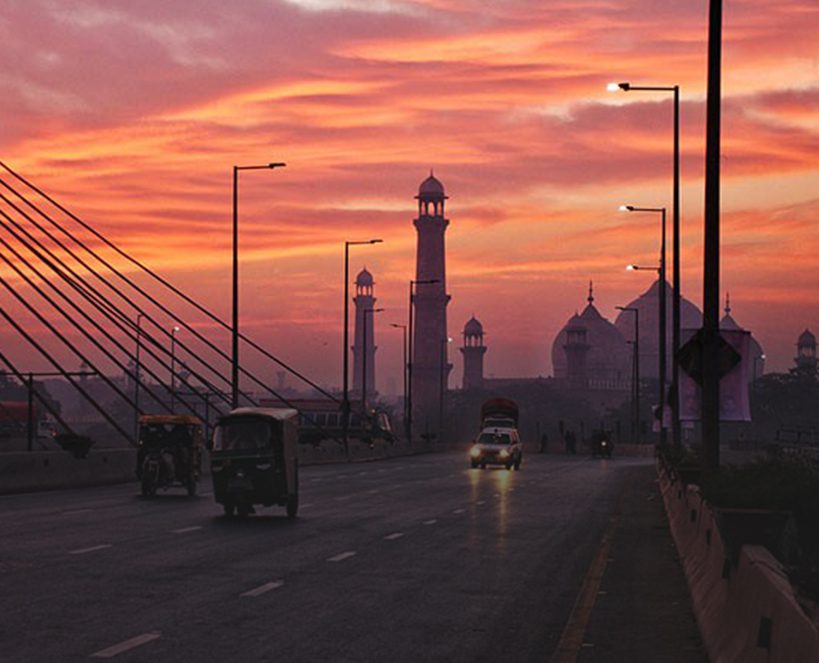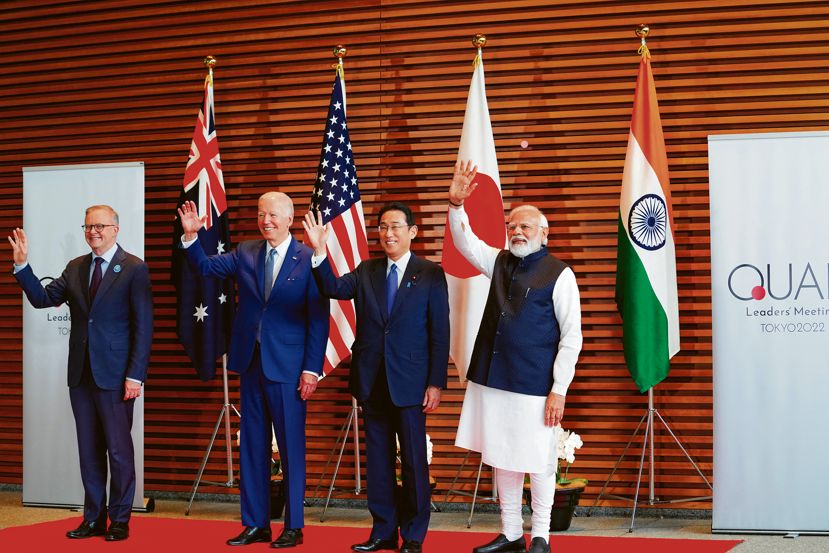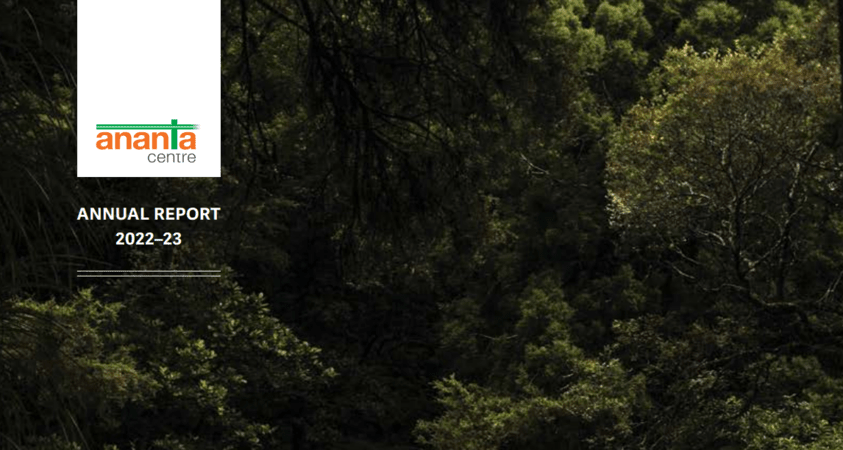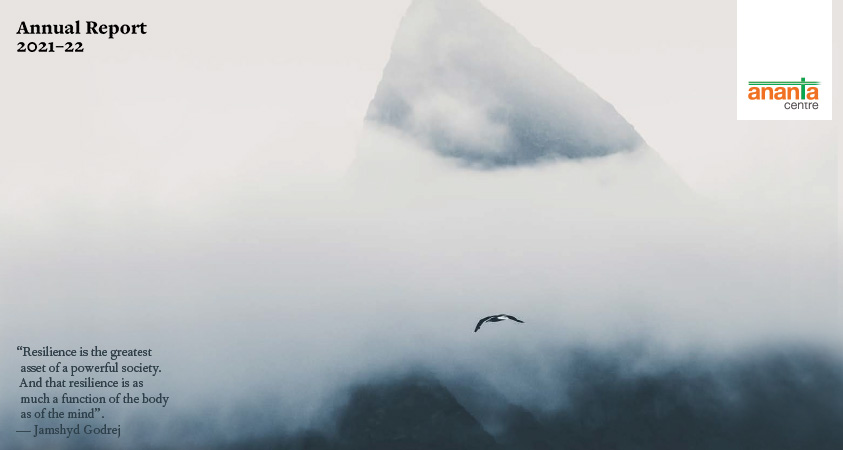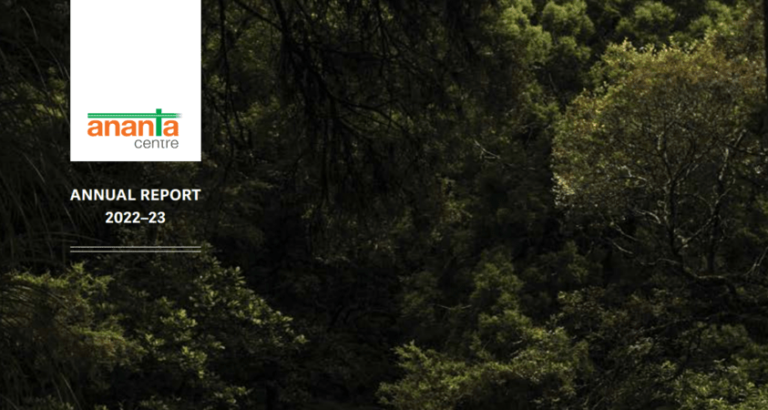HIGHLIGHTS
- 5G auctions make headway, fetch record revenues
- Another BSNL package to clean up its balance sheet
- Govt taxes the oil sector to meet higher spending burden
- Making oil producers and exporters share their spoils
- Quick roll back of new oil taxes benefits some companies
- GST buoyancy brings cheer to North Block
- Exports in June show signs of slowdown, major sectors hit
- Retail inflation marginally lower, IIP growth brings solace
- Indian rupee remains volatile, loses 7 per cent against $
- RBI moves to increase $ flows, allows rupee trade settlement
- Wheat stocks lower; fresh curbs on wheat products
- New SEZ law aims at providing a more comprehensive package
5G auctions make headway, fetch record revenues
Two major developments took place in July 2022 in the telecommunication space. One pertained to the successful completion of the 5G spectrum auctions and the other was the approval to a revival package for the ailing state-owned telecom behemoth, Bharat Sanchar Nigam Limited or BSNL. With the conclusion of the 5G spectrum auctions, the government is now ready to award these airwaves to successful bidders before August 14. The 5G spectrum should be able to significantly improve the quality of telecom services (10 times faster than what 4G services could offer), facilitate the entry of internet of things and reduce latency as well as data losses. Four bidders were in the fray – Reliance Jio, Bharti Airtel, Vodafone Idea and Adani Group. With bids valued at over Rs 1.45 lakh crore being received, the government is also assured of some revenue for the exchequer during the current year. Reliance Jio was the biggest bidder, followed by Bharti Airtel, Vodafone and Adani Group. Many doubts had been expressed about the successful conclusion of the auctions as it was argued that the telecom sector was strapped for funds and the base price for the auctions had not been reduced by the regulator and the government to a level as desired by the telecom players. That the bids still proved to be competitive, the keenest race was for 700 MHz band (the most suited for rolling out 5G services), and the government garnered a decent amount of revenue seem to suggest the beginning of a new chapter in the journey of India’s private sector telecom players.
Another BSNL package to clean up its balance sheet
The government on July 27 approved a Rs 1.64 lakh crore revival package for the state-owned Bharat Sanchar Nigam Limited or BSNL to help it improve its services and clean up its balance sheet. The implementation of the package would result in its merger with Bharat Broadband Network Limited, which would also help it expand its fibre reach across many markets in the country. Potentially, it can become a major rural telecom service provider, given its wide reach across smaller towns and villages in the country. The package consists of a cash support of about Rs 44,000 crore from the government and a non-cash support of Rs 1.2 lakh crore – to be rolled out over a period of four years. BSNL will also be given spectrum in 900 and 1800 MHz bands to help it roll out 4G services. BSNL’s dues to the government would be adjusted against the latter’s equity increase in the company, which would also be allowed to float long-term bonds with sovereign guarantee to raise resources. This is the second revival package for BSNL – the first one of about Rs 70,000 crore was rolled out in 2019 to keep the state-owned telecom service provider afloat. BSNL was set up in October 2000, when it took over the business of providing telecom services and network management from the department of telecom services and telecom operations of the Union government. Its market share has been declining over the years– down at present to about 10 per cent for wireless services, 3 per cent for broadband and 32 per cent for wireline services. It has accumulated losses of over Rs 90,000 crore. In the last couple of years, it has reduced its annual losses and last year it reported an operating profit of about Rs 1,000 crore. Whether the package helps it come out of the red, only time will tell.
Govt taxes the oil sector to meet higher spending burden
The month of July began with the Union government unveiling a set of taxation measures for the oil sector and the yellow metal. A windfall tax in the form of a cess was levied on domestic crude oil producers at the rate of Rs 23,250 per tonne. At the same time, a cess was imposed on the export of petrol and diesel at the rate of Rs 6 and Rs 13 per litre, respectively. Aviation turbine fuel or ATF was slapped with a special additional excise duty of Rs 6 per litre. The customs duty on gold also was raised from 10.75 per cent to 15 per cent. There were multiple objectives of the move. These were: Rein in the current account deficit, which could widen to over 3 per cent of gross domestic product (GDP) in 2022-23, almost double of the 2021-22 level; Reduce the pressure of further depreciation of the Indian rupee; Enhance the domestic supplies of petroleum products and; Shore up the government’s finances, which had shown signs of strains as a result of an increase in expenditure to manage the Covid impact, a rise in subsidies because of higher crude oil prices and a reduction in taxes on petrol and diesel to check inflation.
Making oil producers and exporters share their spoils
The taxation move was expected to fetch about Rs 1 lakh crore during the current year to substantially reduce the extra deficit of the Centre, likely to have been caused by increased expenditure and tax giveaways. The tax on crude oil producers essentially meant that indigenous crude oil producers like ONGC and OIL, which were making substantial gains as a result of higher crude oil prices (Indian refiners get the crude oil from indigenous crude oil producers at prices linked to the international level). According to one estimate, the extra gain was almost about $40 a barrel. The implicit idea was that the cess of Rs 23.250 per tonne would be reviewed when the international crude oil prices declined, reducing the extra gain of $40 a barrel. The export tax idea was triggered by the fact that many oil refiners were diverting petroleum products to the export market as that was fetching them higher prices, compared to the domestic retail prices at home. Since this affected domestic availability of fuel products, the government tried to kill two birds with one stone – make exports less remunerative and earn some revenues. The export tax affected companies like Reliance Industries, Nayara Energy and Mangalore Refinery, apart from the profitability of most oil companies. Even the Reliance refinery that was located in the special economic zone (SEZ) was not spared from the export duty.
Quick roll back of new oil taxes benefits some companies
In just about three weeks from the levy of the extra taxes on the oil sector, the government lowered the tax rates to provide some relief to the affected petroleum sector companies. The big relief was for refinery units located in SEZ, exports from where were fully exempted from the export duty. Reliance was a beneficiary, about 55 per cent of whose refinery output is processed at its SEZ units in Jamnagar in Gujarat. The cess levied on domestic crude oil producers was reduced from Rs 23,250 per tonne to Rs 17,000 per tonne, a cut of 27 per cent. The beneficiaries of this move were ONGC and Oil India. The cut in the cess was much more than the reduction in the international crude oil prices in this period and hence the relief was seen to be more than what had been expected. The entire additional excise duty of Rs 6 per litre on exports of petrol was removed, while that on diesel exports was cut from Rs 13 per litre to Rs 11 per litre. Aviation turbine fuel also saw its export duty cut from Rs 6 to Rs 4 per litre. Even though inflation was still a worry and the government’s additional revenue mobilisation of Rs 1 lakh crore was now down to only Rs 66,000 crore, the government went ahead with the roll back in response to concerns from the oil companies.
GST buoyancy brings cheer to North Block
The buoyancy in revenue from the goods and services tax (GST) continued unabated in July. For the collections during June 2022, the total GST revenue was estimated at Rs 1.45 lakh crore, which was the second highest monthly mobilisation since its launch five years ago. Year-on-year, the collections rose by a healthy 56 per cent over June 2021, an increase which was propped up by the low base effect. In June 2021, GST collections were only about Rs 92,800 crore, thanks to the impact of the second wave of Covid. The other reason for the sharp increase in GST collections was inflation that boosted prices of products and services, which was an added factor contributing to higher revenue. Remember that the GST rates are ad valorem and collections go up automatically as and when prices of products and services also rise. With June 2022 collections at Rs 1.45 lakh crore, the first quarter of 2022-23 ended with an average monthly GST revenue of over Rs 1.5 lakh crore, signifying a growth rate of 37 per cent and bolstering expectations of an annual growth rate of 17 per cent. If that target is met, the contentious issues of GST compensation to the states, which ended on June 30, could be resolved with relative ease. The states will be under less stress and the Centre too could consider becoming a little more accommodative in addressing the states’ demands.
Exports in June show signs of slowdown, major sectors hit
Growth in India’s merchandise goods exports in June 2022 slowed to about 17 per cent at $38 billion, recording the second consecutive month of a slower rise in the current financial year. Imports growth, however, slowed to 51 per cent at $64 billion. In spite of that, merchandise trade deficit widened to a monthly peak of $26 billion in June 2022. The growth in exports was led by petroleum products (up 98 per cent), gems and jewellery (up 19 per cent), rice (up 39 per cent) and ready-made garments( up 45 per cent), even as, worryingly, engineering goods and pharmaceuticals, which create manufacturing sector jobs, fell 1.57 per cent and 1.3 per cent, respectively. Indeed, non-petroleum exports increased by only 5.5 per cent, signalling that exports in sectors other than oil have grown moderately. Imports, on the other hand, grew on the back of crude oil and petroleum products (up 94 per cent at $21 billion), gold (up 169 per cent at $2.6 billion) and coal (up 248 per cent at $6.4 billion). India’s continued dependence on imported crude oil, whose prices jumped in that period, the general preference of Indians for gold at a time equity markets are volatile and domestic shortage of coal have led to the spurt in the import of these three commodities, accounting for almost 47 per cent of the country’s total merchandise goods imports in June 2022. The silver lining was that even non-oil and non-gems and jewellery imports also rose by about 32 per cent, indicating a general recovery in domestic demand. The cumulative numbers for the first quarter of 2022-23 were still relatively strong with exports growth at 22 per cent ($117 billion) and imports growth at 47 per cent ($187 billion). Trade deficit in April-June 2022 was higher at $70 billion, putting pressure on the country’s current account balance. With capital inflows under stress, thanks to net selling by foreign institutional investors, India’s balance of payments will have to be kept under watch.
Retail inflation marginally lower, IIP growth brings solace
Inflation worries for the government eased a bit in July, but not by a margin that would encourage the Reserve Bank of India (RBI) to look afresh at its options in a trade-off between inflation and growth. The June 2022 imprint of the Consumer Price Index came at about 7.01 per cent, marginally lower than the 7.04 per cent mark recorded in the previous month. The number was more than a one percentage point higher than the RBI’s upper tolerance band of 6 per cent and much above the inflation target of 4 per cent. The retail inflation in June was mainly driven by food prices with the CPI for food items showing the inflation at 7.75 per cent. Food items account for almost half of the weight for the index. What brought some relief for the government was the industrial output growth figure at 19.6 per cent for May 2022, although it was caused by a low-base effect. While manufacturing and capital goods sector did well, consumer non-durables, largely represented by fast-moving consumer goods, showed tepid growth. Supporting the industrial output recovery was the Indian Railways’ freight loading performance in June, which clocked a growth rate of over 11 per cent at 125 million tonnes.
Indian rupee remains volatile, loses 7 per cent against $
The Indian currency has had a rough ride so far in the current calendar year. The rupee has depreciated against the US dollar by about 7 per cent in the last seven months, thanks to a confluence of factors including a higher crude oil price, a spike in commodity prices, the continued Russia-Ukraine conflict, global tightening of liquidity leading to net selling by foreign portfolio investors in India to the tune of $37 billion since January. Many other foreign currencies have performed worse than the Indian rupee vis-à-vis the US dollar. But the depreciation of the Indian rupee has been noticeable, although after breaching the Rs 80-mark to a dollar in July, the Indian currency has stabilised a little. The Reserve Bank of India has stepped in with heavy intervention by selling dollar in the markets to calibrate the fall of the rupee. The central bank’s foreign exchange reserves fell by 10 per cent from $634 billion at the end of December 2021 to $573 billion at the end of July 15, 2022. Market experts believe that the worst for the Indian rupee may be over as its value against the dollar is not likely to depreciate significantly in the weeks to come.
RBI moves to increase $ flows, allows rupee trade settlement
On July 6, the central bank announced a slew of measures to attract foreign flows to protect the rupee even as its foreign exchange reserves fell. These measures included exemption of incremental NRE and FCNR(B) deposits from cash reserve ratio and statutory liquidity ratio norms till November this year; banks were allowed to raise NRE and FCNR(B) deposits without reference to regulations on interest rates; norms for governing foreign portfolio investments in government bonds were relaxed and; limits for external commercial borrowing under the automatic route were raised from $750 million to $1.5 billion. In addition, the RBI allowed trade settlements in rupee between India and other countries, including Sri Lanka and Russia. “In order to promote the growth of global trade with emphasis on exports from India and to support the increasing interest of the global trading community in the Indian rupee, it has been decided to put in place an additional arrangement for invoicing, payment and settlement of exports/imports in the Indian rupee,” a notification from the RBI stated. It further clarified that the exchange rate between the currencies of the two trading partner countries under the new rupee settlement system may be market-determined. The move was an attempt to conserve the use of foreign exchange reserves for meeting the country’s import requirements from countries like Russia. It remains to be seen how effective and efficient the new system turns out to be in the days to come.
Wheat stocks lower; fresh curbs on wheat products
Responding to concerns over depleting wheat stocks and rising prices of wheat products, the government in the first week of July took the unusual step of placing curbs on exports of wheat flour and other related products such as maida, rava (semolina) and whole meal atta. All exporters were required to seek prior permission from an inter-ministerial committee on export of wheat before undertaking any outbound shipment of such products. These curbs were enforced from July 12. Two months ago, in May, the government had placed an outright ban on exports of wheat, causing concern among traders. What was being enforced for wheat products was an administrative monitoring leading to restrictions on their exports. The government’s policy response could be appreciated in the context of its assessment of the available wheat stocks in the country. As on July 1, total wheat stocks in the Central pool had dropped close to the minimum required to maintain a buffer stock and strategic reserves. Low procurement on top of a reduced production of wheat in 2021-22 meant that the total what stocks as on July 1 with the Centre were estimated at 28.51 million tonnes, compared to the 27.58 million tonnes needed for maintaining the buffer stock and strategic reserves. The relatively low stocks of wheat also had serious implications for the government’s policy options on continuing the free food ration scheme beyond September 2022. Adding to the government’s worries was a 12 per cent rise in wheat prices since the ban on exports of the crop was imposed in May.
New SEZ law aims at providing a more comprehensive package
A new policy regime has been proposed for industrial units to be located in special economic zones or SEZ. The Development of Enterprise and Service Hubs (DESH) Bill is expected to be tabled in Parliament during the ongoing Monsoon Session. The new law will change the entire performance criterion for the success of enterprises to be set up in these special economic zones. Instead of just ensuring that these enterprises show their net foreign exchange earnings at a level higher than their total imports, the new regime under the new law would introduce a new concept of net growth for evaluating the performance of such units. The new yardsticks would include broad-based parameters like employment generation, incremental economic activity, promotion of investments, encouragement to research and development, and infrastructure development. The new bill will aim at creating developmental hubs with a focus not just on exports but also on catering to the needs of domestic markets. These hubs would be integrated with existing industrial estates such as those for textiles or food parks. Both manufacturing and service sector units would be encouraged to be part of such hubs. A key feature of the hubs would be the corporation tax regime to be applicable to units located there. The corporation tax rate is proposed to be levied at 15 per cent for both green field and brownfield units. State government would be made key stakeholders in the formation or promotion of these hubs. The expectation is that the rules of these hubs would not face the kind of objections, which units in the existing special economic zones faced from a committee of the World Trade Organisation. The government, it would appear, is keen on giving the special economic zones a big push in a different garb. The special economic zones were launched in 2006. As many as 378 such zones were notified till June 2022 and 268 of them were operational, while the remaining zones were denotified. Exports from the operational SEZs were estimated at $102 billion in 20-21, down from $112 billion in 2019-20, accounting for a quarter of India’s total exports of merchandise goods.
The previous issues of Indian Economy Review are available here: LINK
Supported by
………………………………………………………………………………………………
(The views expressed are personal)
………………………………………………………………………………………………




